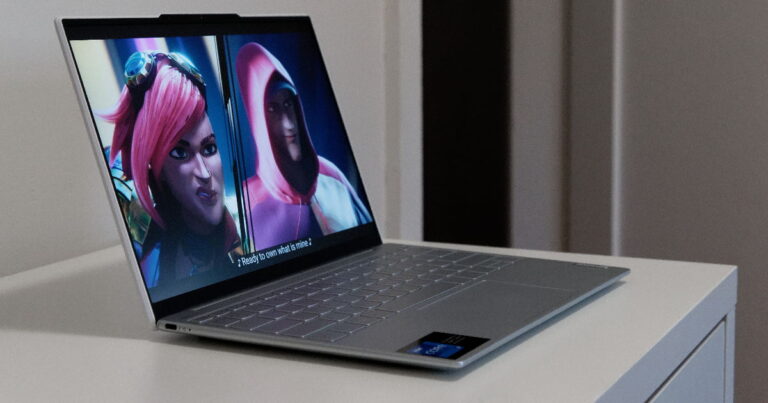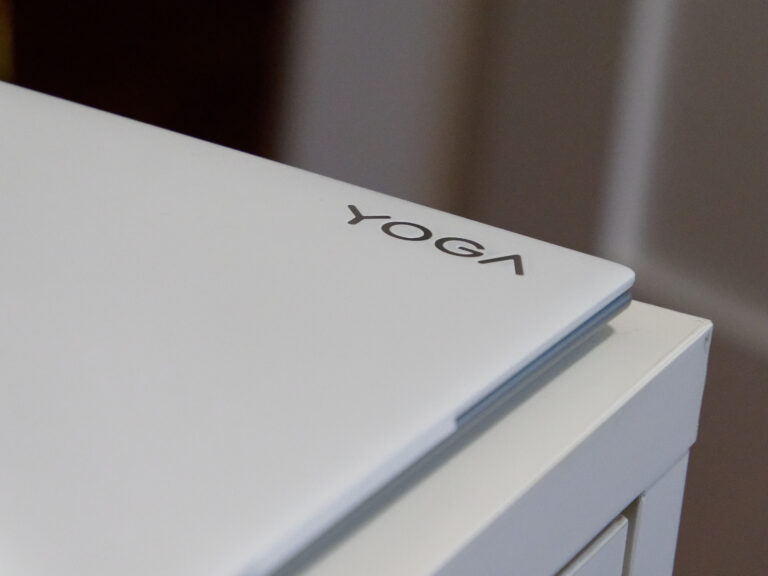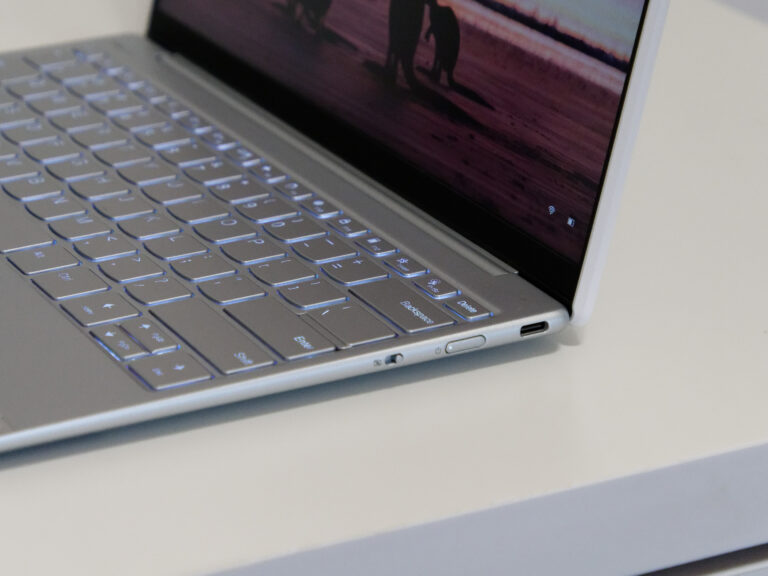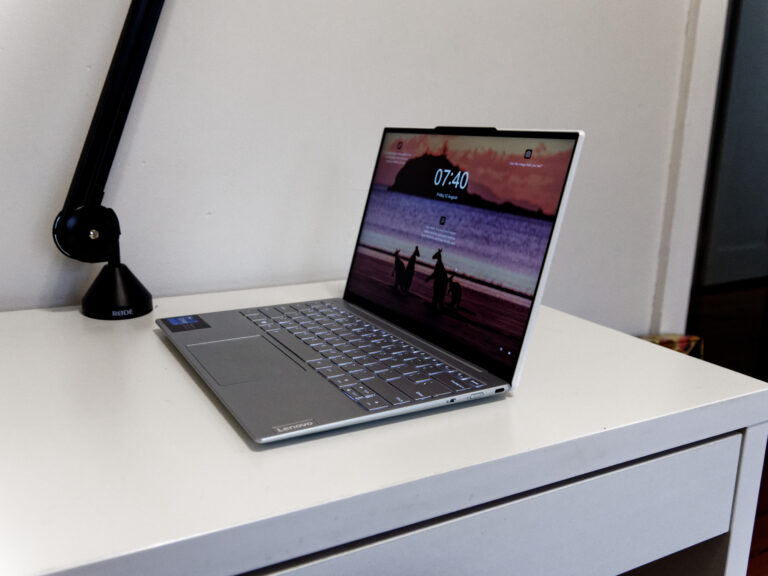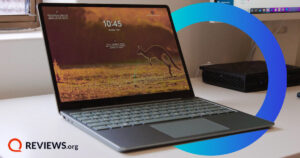Optus Mobile Review ALDI Mobile Review Amaysim Mobile Review Belong Mobile Review Circles.Life Review Vodafone Mobile Review Woolworths Mobile Review Felix Mobile Review Best iPhone Plans Best Family Mobile Plans Best Budget Smartphones Best Prepaid Plans Best SIM-Only Plans Best Plans For Kids And Teens Best Cheap Mobile Plans Telstra vs Optus Mobile Optus NBN Review Belong NBN Review Vodafone NBN Review Superloop NBN Review Aussie BB NBN Review iiNet NBN Review MyRepublic NBN Review TPG NBN Review Best NBN Satellite Plans Best NBN Alternatives Best NBN Providers Best Home Wireless Plans What is a Good NBN Speed? Test NBN Speed How to speed up your internet Optus vs Telstra Broadband ExpressVPN Review CyberGhost VPN Review NordVPN Review PureVPN Review Norton Secure VPN Review IPVanish VPN Review Windscribe VPN Review Hotspot Shield VPN Review Best cheap VPN services Best VPN for streaming Best VPNs for gaming What is a VPN? VPNs for ad-blocking While the new Yoga Slim 7 Carbon isn’t quite as premium or versatile as the likes of the Yoga 9i, there’s still a lot to like about it. If you’re in the market for something that skips out on the decadent material design but doesn’t forgo any of the performance chops, the Yoga Slim 7i Carbon has plenty to offer. Check out the table below for a quick round-up of how much it costs to buy the Lenovo Yoga Slim 7i Carbon in Australia. Putting a practical spin on premium specs, the Yoga Slim 7i Carbon is framed around a 13.3-inch 2.5K resolution “PureSight” display. Clocked at a 90Hz refresh rate, this setup doesn’t bleed luxury tech like the latest Dell XPS lineup does. Still, it is 14.8mm thick at its thinnest, so it’s hard to hold that onto shortcoming for all too long. At less than 1kg, the Yoga Slim 7i Carbon feels like a verified featherweight compared to the aluminium slabs available from Apple (not to mention the alternatives). Nevertheless, the amount of overlap in terms of features and specs here relative to comparable efforts from Dell, HP and others begs the question of why. On the whole, modern laptops aren’t just slimmer than their ancestors. They’re also typically better at wearing that weight. The more expensive a given laptop, the nicer it tends to look. The raw materials that make up that aggregate niceness seen in fare like the MacBook Air aren’t always heavier than the plastic and carbon fibre body seen here, but they usually are. The Yoga Slim 7i Carbon turns down this trade-off and reaps the benefits. It’s not only slimmer and lighter, the shift towards cheaper (albeit textured) material design here means that you’re less worried about bumps, scratches, scrapes and everyday wear-and-tear. The keyboard on the Yoga Slim 7i Carbon stretches all the way to the edges of the chassis, though the level of press leaves something to be desired. Those who prefer the satisfying clack of something more mechanical may want to look elsewhere. Likewise, the trackpad here is larger enough to be comfortable but hardly more than the average Windows machine in 2022. In terms of ports, the Lenovo Yoga Slim 7i Carbon is even more streamlined than something like Apple’s latest MacBook and MacBook Pro. You get two USB Type-C ports and that’s it. Not even a headphone jack. One of these is USB-C 3.2 Gen 2, the other is Thunderbolt 4. Despite a broader tendency towards minimalism, there are a few bells and whistles worth noting here. There’s a physical privacy shutter for the 720p webcam on the Yoga Slim 7i Carbon, plus a set of stereo speakers with Dolby Atmos support and tuning by Harman Kardon. There’s also Windows Hello facial recognition and support for up to 65W fast-charging. The aforementioned webcam is more functional than fantastic. It struggled to balance out even “bright-ish” environments. Meanwhile, the speakers sounded more okay than exceptional. The sound stage isn’t particularly wide, nor is the bass all that punchy. It’ll work in a pinch, but it’s hardly the part of the Yoga Slim 7i Carbon that you’ll want to show off to friends or colleagues. People buy on looks all the time, but the moment-to-moment motions that come with regular usage of a given laptop is something they’ll have to live with over the long haul. A laptop that looks better isn’t always the same as one that feels better. When you go beyond the $2000 threshold, the devil tends to be in the details and the attention to detail is where the Lenovo Yoga Slim 7i Carbon shines. This dynamic plays into the emphasis on aesthetics mentioned earlier. If you’re getting roughly the same level of performance at roughly the same price, then why shouldn’t you go for the laptop that feels just that little bit nicer to behold? However, rather than settle for similar, the Lenovo Yoga Slim 7i Carbon shapes this situation into an opportunity. Instead of asking consumers to choose on looks, it’s looking to lure those who prefer to prioritise portability but don’t really want to compromise on performance. To that end, the Yoga Slim 7i Carbon comes armed with either an Intel Core i5-1240P or an Intel Core i7-1260P processor plus up to 16GB of RAM. You also get up to 1TB of SSD storage to play with, as well as Intel Iris Xe integrated graphics in lieu of a more dedicated alternative. For those working with a more browser-based workflow, the Lenovo Yoga Slim 7i Carbon’s natural strengths and weaknesses will usually work in your favour. I could comfortably juggle around twenty tabs in Firefox with no clear slowdown and apps in Windows (although rare) never suffered any sort of slowdown. While it’s easy to wish for a bit more RAM or storage space, the practical realities presented by the hardware here are hard to fault. Our benchmarking found that the Lenovo Yoga Slim 7i Carbon lagged behind some of the other options when it came to the CPU-centric likes of Cinebench. Although it couldn’t keep pace with the AMD processor inside the older Yoga Slim 7 Pro OLED, it managed to keep up with Apple’s M1 MacBook Air when it came to Geekbench’s Compute test and a performance assessment via Novabench. While our top-spec review sample did deliver solid performance, many of the same old limits to laptop performance still apply here. Unless you sign up for a games streaming service, you’re not going to be able to comfortably boot up Cyberpunk 2077 on this thing. Still, for lighter gaming or content creation purposes, the integrated graphics inside the machine proved mostly up to the task. Indie games like Dread Delusion, Wingspan and Dead Cells were perfectly playable. In contrast, more visually-demanding titles like Shadow of the Tomb Raider struggled to play nice with the Yoga Slim 7i Carbon’s modest. The hardware here could manage to hit a reasonably high frame rate, but only by crunching down the resolution to 720p and cranking up the noise of the fan. As for battery life, I found that the Lenovo Yoga Slim 7i Carbon could usually last me through the work day, but struggled with longer sessions. In our standard battery rundown test, which measures how long it takes a full charge to hit zero from streaming video on YouTube, the machine lasted 5 hours and 21 minutes. This result puts it below both the Microsoft Surface Laptop 2 and well below the battery performance offered by Apple’s more recent MacBook hardware. The story here is a simple one. The Lenovo Yoga Slim 7i Carbon shines bright, but briefly. A lean laptop that’s ideal for those whose workflow exists mostly within a web browser and doesn’t demand more than a single USB Type-C port, the Yoga Slim 7i Carbon is no substitute for the standout and stylish designs seen elsewhere. Still, if you don’t mind the cheaper feel-factor and want a simple solution to the eternal question of which laptop should I buy, the Lenovo Yoga Slim 7i Carbon wastes little time winning you over with a blend of portability and performance.
Screen size and type: Unlike upgradeable components like your GPU, RAM and storage, you’re stuck with the display you buy when you purchase a laptop. Is it a comfortable size? Does it offer a wide-viewing angle? Resolution: Similarly, you can’t change your display’s resolution after the fact. 1080p (Full HD) is the bare minimum these days and most laptops worth their price tag aim for 1440p at least (QHD or QuadHD) but you can also opt for 4K if you’re willing to spend a little extra. Refresh rate: A screen’s refresh rate is the measurement of how frequently it changes. If you play fast-paced multiplayer games like Call of Duty, you know that the difference a few milliseconds that a high refresh rate gets you can count for a lot. The higher the refresh rate, the better. Most conventional laptops offer 60Hz to 90Hz but fancier gaming laptops can offer 144Hz, 165Hz or even 240Hz screens. Ports and connections: Like your screen, ports will impact your everyday experience with a laptop, particularly if you use it for work. While you can work around this with USB hubs and adapters, a laptop with fewer ports than you need can quickly become a headache. Future-proofing: There are no hard and fast rules here but as a general suggestion, you’ll want to sure you’re laptop has the legs to survive a few years of technology improvements in any way you can. You can overshoot on your desired specs, spending more on a machine that’s more powerful than you currently need, or opt for a model or brand that has support for upgrades down the track. Check which features of the machine are upgradeable. The Dell XPS 15, for example, supports additional RAM, while Apple MacBooks do not.
Check out our dedicated laptop buying guide for more suggestions on shopping for the best laptop for your needs.
